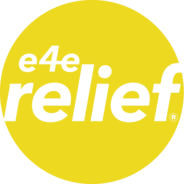The foundation for my leadership is a book called “Servant Leadership,” by Robert Greenleaf.
That's where my feet are planted. The book is essentially about doing what we can for “the least of these,” and it’s about enabling and empowering colleagues, employees and people in need. It's all about lifting people up. That's fundamental to who I am. And I don't put aside for a moment the fundamentals of leadership, management organization, the discipline that it takes to run an organization and the importance of competence in all the things we do.
Serving on a nonprofit board is a meaningful way to contribute to society and make a positive impact in the community. Board members play a crucial role in shaping an organization's mission, strategy and overall direction as their expertise, skills and passion can help guide important decisions, ensure financial stability and advance the nonprofit's goals. Board service also offers valuable opportunities for its members to achieve personal and professional growth, allowing them to expand and mobilize their networks, sharpen leadership skills and leverage their insights into nonprofit management and governance.
As one of its founding members, I have been fortunate to participate in the origin and development of E4E Relief. Among the contributions I am committed to making is identifying my “why.”
Get out there and help people
Regardless of a person’s professional background and acumen, being a dedicated board member requires visionary leadership. As it relates to my role on E4E Relief’s board and in the wake of the seemingly insurmountable fallout from the September 11 tragedy, I recognized early on that emergency financial relief was a critical need for both the individuals who were adversely affected by unexpected disasters and hardships and the companies for which they work. I thought it was extraordinarily important for companies to have a means to help employees in crisis and from my own experience, I had learned that other employees want to help employees in crisis. I see Emergency Financial Relief made available by employers to employees, bringing those forces together to actually be helpful and to make it simple, human and respectful. All those things were extremely important to me and are very much aligned with my values both as an employer and as a human being.
What I didn't anticipate when I first got involved was how much more frequent the environmental crises would become, with floods, fires, disasters, storms and disasters of every kind. In retrospect, I think perhaps the frequency didn't change as much as it seemed, but once I became affiliated with E4E Relief and saw that the organization has a national and international lens on the number of disasters happening in real time, it really drove home the message that E4E Relief is needed in the marketplace.
Managing the myriad moving parts of that Herculean need required quick ingenuity, grantmaking expertise and fool proof processes to ensure that the legal infrastructure – including offering tax efficiency for employers and tax-free grants to employees – mitigates risk and complies with domestic and international IRS standards. Additionally, the complexities of that work had to be balanced with a compassionate approach that both alerted potential applicants to their employers’ emergency financial relief program and also provided a rallying cry for other corporations to act on supporting their workforce in this important way.
I had some experience with disaster response prior to my involvement with E4E Relief. While I was president of Central Piedmont Community College, I was also heading the United Way campaign. I solicited Duke Energy on the first day of Hurricane Hugo, which is still remembered as one of the most devastating storms ever to hit this area. Later, my tenure as President of the Duke Energy Foundation provided me with valuable insights to the importance of supporting employees during times of crisis. As the leader of the company's philanthropic arm, I was directly involved in decisions regarding community support and employee welfare.
That experience shaped my understanding of the critical role that company-sponsored emergency financial relief can play in supporting employees facing unexpected hardships and influenced my perspective on what it means to have an in-the-trenches mindset when it comes to caring for employees by combining advanced tech-enabled solutions with a genuine human-to-human touch. The hands-on approach to community relations and employee support aligns with E4E Relief’s reputation for going beyond standard corporate practices in fostering positive relationships between companies, their workforces and the broader community. I had been both President and CEO of Duke Power Company and president of the Duke Energy Foundation. So, I really had an opportunity to see it from both sides; both the side of the employer and then the side of the grant making entity within the corporation.
An evolving mission
As one who had the good fortune to assist in creating E4E Relief as a social enterprise organization, my early involvement gave me unique insight into the challenges and opportunities in the emergency financial relief by companies who seed and sponsor grant fund space. The E4E Relief mission has certainly expanded, but the edict has not changed: Compassion is our currency.
Over the years, I have seen E4E Relief's mission evolve significantly. What started as a regional effort has grown into a global leader in employee relief programs, now serving over seven (7) million employees worldwide. This growth is credited to E4E Relief leaders’ ability to adapt to changing needs while staying true to the organization’s core purpose of supporting employees during difficult times. One of my goals as an E4E Relief board member is to help guide the organization's strategic direction, which includes the importance of effectively communicating E4E Relief's impact.
At the root of why emergency financial relief has moved from being a nice-to-have to a must-have for corporations is the people; the beneficiaries of the grants. It is their stories that truly punctuate why my commitment to the E4E Relief board continues. These stories range from those who have received assistance that allowed them to evacuate after a storm to women who have gotten additional medical testing not covered by insurance to domestic violence survivors who were able to remove themselves from a dangerous environment and start fresh in another domicile, just to name a few. As an E4E Relief board member, I have the distinct privilege of witnessing firsthand how our work helps reroute life’s unexpected detours back to straight pathways. The proposition of relief for individuals sponsored by companies is not just data-driven; it represents every company’s emotional and corporate stewardship crossroads. And the stories we have been telling for over 20 years bring the E4E Relief mission to life and demonstrate the tangible difference made when people receive help quickly and empathetically.
Continuing the legacy
As E4E Relief, the first-of-its kind in the corporation-seeded employee relief space, looks toward the future, it is my intention and hope that the foundational work the board has contributed ensures the organization will remain at the forefront of supporting employees through life's unexpected challenges. The board’s legacy is one of compassion, innovation and unwavering dedication to helping others, while supporting company HR, CSR and ESG leaders in their desire to broaden and deepen the total employee experience. This noble pursuit isn’t just advocacy: it’s people-first purpose.
As an E4E Relief board member, dedicating my time and talents to a cause I care about can create lasting change that results in a ripple effect with immeasurable positive outcomes. And, while my E4E Relief board service requires commitment and responsibility, it is also an incredibly rewarding experience that allows me to give back in a significant way and leave a legacy that makes such a difference.
I believe in E4E Relief and the trajectory of its good, meaningful work.


